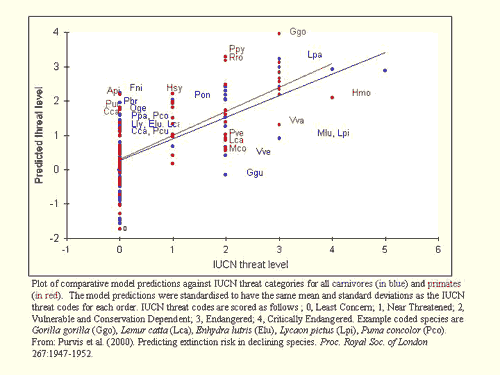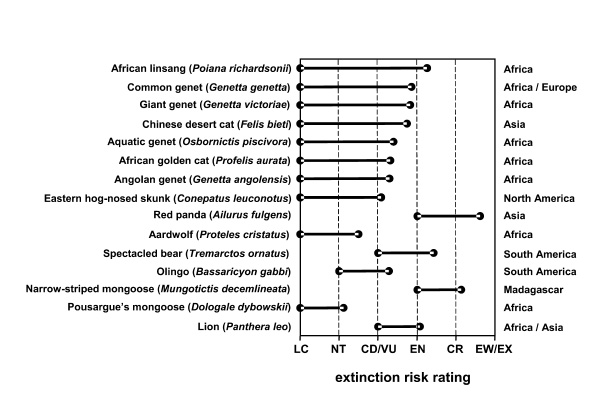Correlates of Extinction Risk
How and why lineages speciate and go extinct is critical to understanding the evolution of biodiversity. Accurate phylogenies permit tests of differential patterns among lineages. Using complete "supertrees" of primates, carnivores and bats, we are assessing phylogenetic trends in threatened and endangered species. Applying the latest global classification systems (e.g., IUCN Red List), we are investigating which lineages are more threatened and assessing morphological, life history, ecological and behavioral correlates of extinction risk (see also Drs Kate Jones, Andy Purvis, Marcel Cardillo). To date, we have found that in bats, carnivores and primates high trophic level, low population density, slow life history and, especially, small geographic range size are all significantly and independently associated with high extinction risk in declining species. These traits together explain nearly 50% of the total among-species variation in extinction risk. Much of the remaining variation can be accounted for by external anthropogenic factors that affect species irrespective of their biology. Most recently we demonstrated how biology interacts with human population density to determine extinction risk: biological traits explain 80% of variation in risk for carnivore species with high levels of exposure to human populations (Cardillo et al. 2004). The results suggest that biology will become a more critical determinant of risk as human populations expand.

